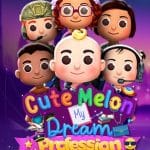🎓 Educational Games are the Smartest Way to Learn Through Play
Educational games are interactive experiences built with the primary goal of making learning more accessible, engaging, and effective for players of all ages. These games replace traditional worksheets and passive lectures with hands-on problem-solving, real-time feedback, and playful curiosity. Players learning math, science, history, or language skills can benefit from educational games that offer structured environments, rewarding exploration, logic, and creativity.
Unlike puzzle games or arcade games that often prioritize entertainment, educational titles serve a dual purpose—they teach and entertain simultaneously. Thanks to advances in technology, many modern educational games now support adaptive learning paths, making them ideal for classrooms, at-home study, or on-the-go brain training.
🧠 What Makes Educational Games Valuable?
These games have evolved into powerful teaching tools that support both academic instruction and cognitive development. Here’s why educators, parents, and learners gravitate toward them:
- 📈 Curriculum-Focused Gameplay: Topics like arithmetic, grammar, coding, and even financial literacy are built into the mechanics of each game.
- 🧩 Problem-Solving-Based Design: Many games use puzzles or story-driven missions to test logical reasoning and decision-making skills.
- 🗣️ Language Skill Builders: Vocabulary, spelling, and comprehension are often central to the gameplay experience.
- 👨🏫 Teacher & Parent Integration: Progress tracking, difficulty scaling, and content customization make these games useful in formal education settings.
- 🕹️ Cross-Platform Learning: Most games are accessible via browser, mobile, or tablet, allowing seamless transitions between home and school.
📚 A Genre Loved by Learners of All Ages
From kindergarten students mastering the alphabet to adults sharpening coding or geography skills, educational games appeal to a wide demographic. Platforms like ABCya, Kahoot!, and DragonBox have transformed how learning is delivered, offering a more active, personalized, and motivating format than conventional approaches.
Titles within this category often intersect with brain games, logic games, and even quiz games, all of which contribute to cognitive development. This interconnectedness strengthens the educational genre’s authority in the gaming landscape.
📊 Educational Games as a Learning Movement
The shift toward game-based learning is no longer a trend—it’s a recognized approach in both academic and professional training sectors. Educators are increasingly combining these games into lesson plans to make complex subjects more digestible and engaging.
Parents also use these tools to supplement after-school learning or holiday revision without overwhelming their children with traditional study formats. And with the rise of AI-driven personalization, educational games continue to evolve, tailoring content to individual needs for more impactful outcomes.



























































